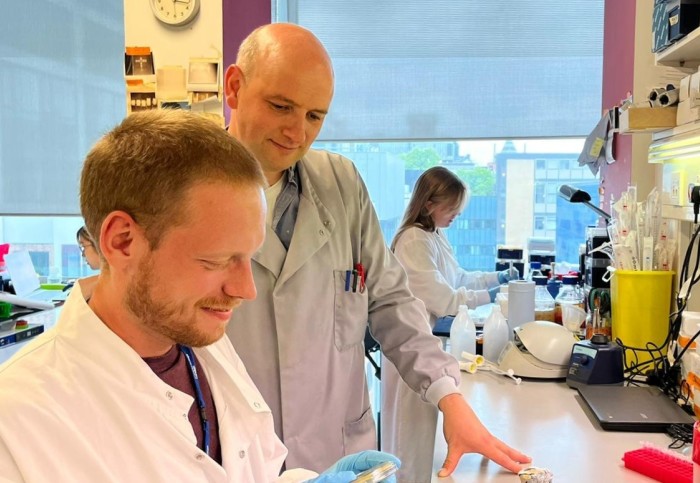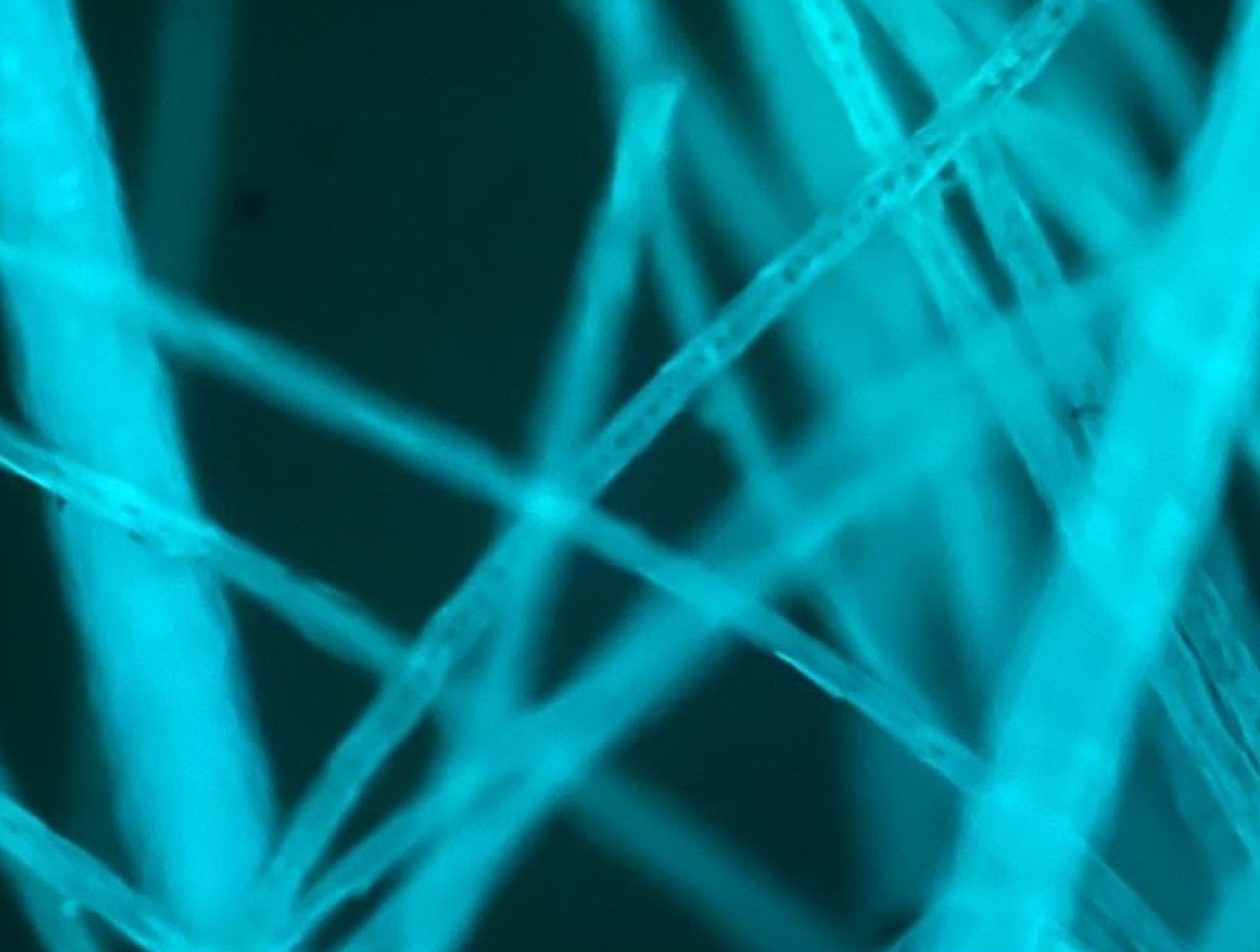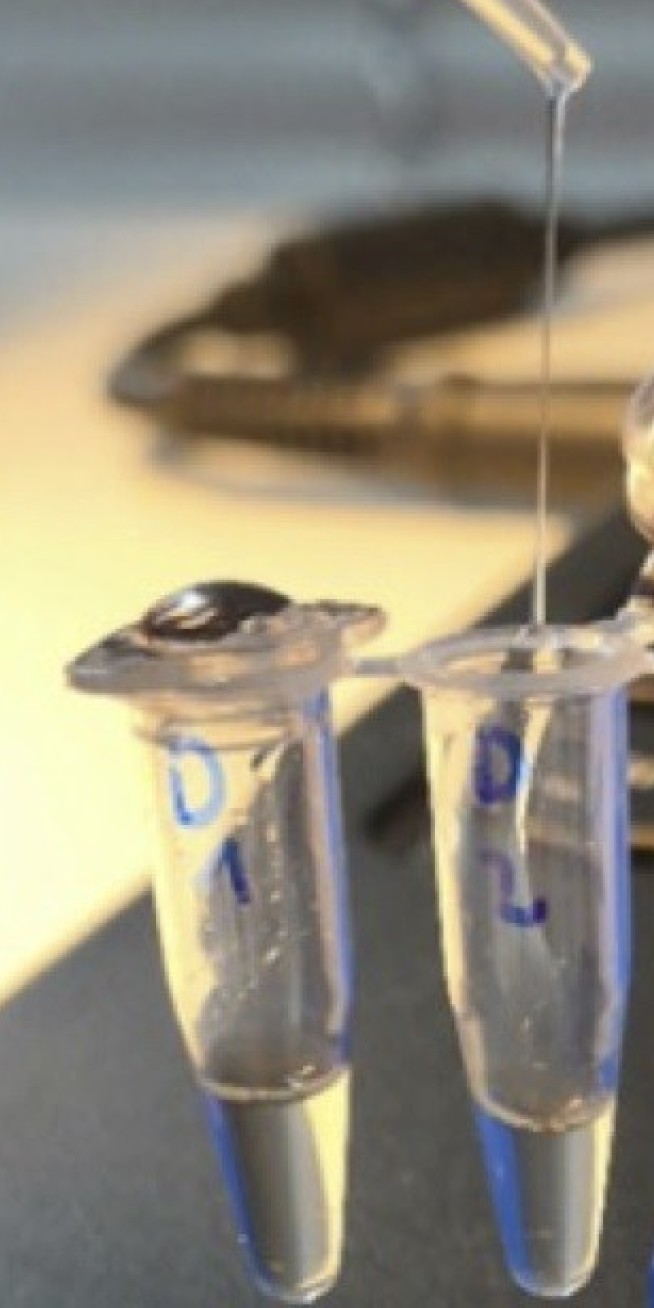Fashion industry collaboration to create lab-grown fur
by Ian Mundell

Professor Tom Ellis (middle) is rethinking fur.
Luxury fashion house Fendi, part of LVMH, wants a sustainable alternative to fur. Researchers from Imperial and Central Saint Martins are on the case.
Finding an integrative alternative to fur in the fashion industry means replicating the luxury qualities of the original material. If it feels fake, then it is a failure. Professor Tom Ellis in the Department of Bioengineering at Imperial thinks he has part of the answer: use genes from fur-producing animals such as fox and mink to grow substitute hair fibres in the laboratory.
This approach is now being put to the test in a two-year project with Central Saint Martins, part of the University of the Arts London, and luxury goods company LVMH, whose Fendi fashion house specialises in fur. “In the last decade, our understanding of biological materials and how they are made by nature has increased dramatically,” Professor Ellis explains. “It is now the perfect time to initiate the idea of designing fibres for fashion made sustainably from microbes.”

Professor Ellis and his group have a lot of experience growing different proteins in the laboratory. This is done by selecting the gene for the protein in question and patching it into a modified form of yeast, which then produces the protein as it grows in a bioreactor. The protein can then be extracted, purified and used according to its properties, for example as a medicine or a component in a material.
Keratin combinations
In the case of the fine hairs that make up fur, the protein of interest is keratin. The first challenge is that there are between 100 and 200 keratin genes in the typical mammal genome. “Keratin is incredibly abundant in animals,” says Professor Ellis. “It gets made into hair and nails, but it also forms structural components in every tissue and every cell. It’s the material that holds things up.”

Then you have to find not one but two kinds of keratin to give the desired effect. “The diversity in our hair, in our skin, and in our nails is down to different pairs of keratin. So, we will be testing a variety of different combinations of keratins, from the available genome sequences of typical fur-producing animals, to see which is the combination we need.
These pairs of keratins then need to be brought together in the bioreactor to form a basic animal hair. “Our aim within this pilot project is to make enough of the right keratins to have a self-assembly of a fibre that is an appropriate length for a fur-like material.”
Meanwhile, Professor Carole Collet at Central Saint Martins will be looking into how these fibres might be turned into fur, and how this new material might be received. “Learning from nature, and working at the intersection of design and biotechnology research, is key to the exploration of such future-facing innovation,” she says.
Regenerative luxury
Together with LVMH and Fendi, Professor Collet will look into the market-fit of a new kind of fur such as this, what designers would make of it, and how the public might react. The expectation is that it will be more luxurious than fake furs made from plastics, with better environmental credentials. This will be explored with a thorough life-cycle analysis of the new product.
LVMH and Central Saint Martins have been working together on this and other issues in “regenerative luxury” since 2017, through a collaboration called Maison/0. “Inventing new materials, new regenerative practices, and new technologies will enable our Maisons to achieve their climate and biodiversity ambitions,” explains Hélène Valade, Environmental Development Director of LVMH.
There is great potential for crossovers between the sort of deep science that Imperial is famous for and the creative industries. Professor Tom Ellis Department of Bioengineering
Professor Ellis is quick to credit Professor Collet with putting the fur project together. “The idea came from Central St Martins, and they made the match between Imperial and the fashion houses,” he says. “It’s incredibly exciting to begin this new collaboration with luxury leader LVMH and globally recognised fashion brand Fendi, and Professor Collet, a world-leading expert in biodesign.”
If this approach works, it need not stop at familiar luxury furs, such as fox and mink. “If you look at the genomes that have been sequenced, perhaps you might want lab-grown mohair or cashmere, or even a fur coat made from the woolly mammoth genome. These things could be possible: all you need to start is a DNA sequence on a database.”
There is a bright future for further collaborations between Imperial and the creative industries. "The sort of deep science that Imperial is famous for is not normally seen working hand-in-hand with the creative industries, but we think there is great potential for crossovers between these areas,” Professor Ellis concludes. “We can influence and accelerate their innovation, and I'm sure they will be doing the same for us."
Article text (excluding photos or graphics) © Imperial College London.
Photos and graphics subject to third party copyright used with permission or © Imperial College London.
Reporter
Ian Mundell
Enterprise